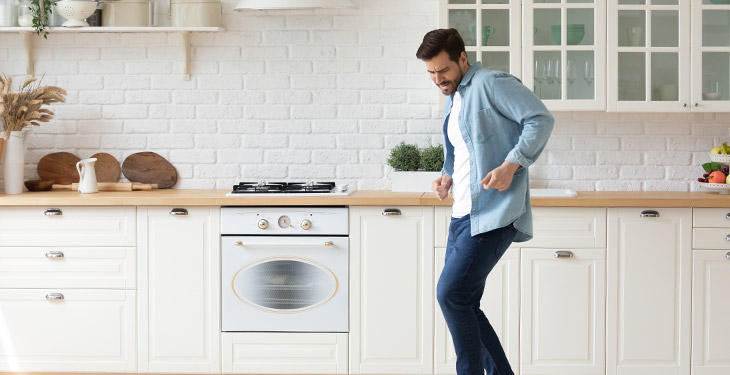
3 tax-efficient ways to save for your future
Canadians have never had more places to save for their future. Here are three registered accounts to consider.
Your priorities are always changing. At one point, you’ll be saving for your first home; next, you’re starting a life with a partner, or maybe dreaming of life after work. There may even be times when you’re thinking about all those things at once.
Shifting priorities is fine – and natural. What is important is to make sure you’re using the right investment tools for your goals. There are several registered accounts in Canada that can help you grow your wealth and even help reduce your taxes.
Here is a look at three ways to save for your future.
Saving for a home – FHSA
If you are saving for your first home, there is no better vehicle to grow your down payment than the new Tax-Free First Home Savings Account (FHSA). The newly launched registered account allows Canadians aged 18 to 71 who have not owned a home in the past four calendar years to contribute up to $8,000 per year to an FHSA, to a maximum of $40,000 over the 15-year lifetime of the account.*
Like all registered accounts, investment earnings inside the account grow tax-free. Like the Registered Retirement Savings Plan (RRSP), contributions to an FHSA are tax-deductible, while like the Tax-Free Savings Account (TFSA), withdrawals are entirely tax-free – so long as the money is used to purchase a qualifying home. The FHSA combines the benefits of the RRSP and TFSA , but more on that later. Before you open an account, take stock of your goals and when you think you may be ready to buy a home. Why? Because the moment you open your FHSA, you have 15 years to use it.
Pro
- Contributions are tax-deductible, which could reduce your tax bill.
- Withdrawals are tax-free when used to buy a qualifying home.
- Unused funds can be transferred to an RRSP or a Registered Retirement Income Fund (RRIF) tax-free.
Con
- FHSA withdrawals are only tax-free when used for the purchase of a qualifying home.
- The account must be closed after 15 years. If you haven’t used your savings to buy a first home, you have to withdraw the funds, which will be taxed as income, or transfer them to an RRSP or RRIF.
Saving for retirement – RRSP
There are a few different ways to save up for retirement, but if you’re earning an income and want to get the best bang for your buck, then the RRSP is your best option. RRSPs offer several benefits to help boost your retirement savings. For starters, contributions are tax-deductible, meaning they can offset any income tax you may owe. This feature is particularly attractive to higher-income earners, as the contribution can push you into a lower tax bracket. The resulting tax refund can be reinvested in your RRSP to accelerate your retirement savings.
Like all registered accounts, earnings within the RRSP grow tax-free while inside the account, meaning they’re not subject to any annual taxes like they would be if they were held in a non-registered account. Given how long people tend to hold their money in an RRSP, those investments have plenty of time to compound over decades. While withdrawals are taxed as ordinary income, many Canadians find they are in a lower tax bracket in their retirement years than in their earning years, which provides additional tax benefits.
Pro
- Contributions are tax-deductible and could lower your tax bill.
- Earnings inside the RRSP grow on a tax-deferred basis.
- There is some flexibility to withdraw under the Lifelong Learner Plan and the Home Buyers’ Plan.
Con
- Withdrawals are taxed as income.
- Withdrawals can affect government benefits like Old Age Security and the Guaranteed Income Supplement.
Savings for other goals – TFSA
Saving for a first home or retirement is a worthwhile investment, and an FHSA or RRSP is a tax-efficient way to help you do that. If you need more flexibility or want to save for a shorter-term goal, consider the TFSA. This account gives you a way to grow your savings tax-free, and you can use the money for anything you want, including helping to save for a first home, or retirement, but also a wedding or renovation.
Once you turn 18, you automatically start accumulating contribution room, so if you’re just starting out and not earning an income, TFSAs should be your go-to investment option if you have the extra cash. Not only will your money grow tax-free, but you also never have to worry about paying any tax on gains or withdrawals.
Pro
- Flexible.
- Contribution room grows every year regardless of earnings.
- Tax-free earnings and withdrawals.
- Withdrawals can be recontributed in the following year.
Con
- Contributions use after-tax income, so you don’t get a tax deduction.
Combine and conquer
While each registered account has a purpose, there are times when you can use all three to help you save toward a single goal. Buying a home is one of those times. If you’re motivated to grow your down payment as quickly as possible and have the cash to contribute, you can use an FHSA, RRSP and TFSA. You can maximize the tax-free growth to save for your down payment, and potentially give yourself some additional flexibility if you’re not sure when exactly you’ll buy your first abode.
If you have a specific goal, use that to help you decide where you’d like to focus your savings. If you’re unsure, pick the account that offers you the most flexibility. If you’re just starting out, the important thing is to start investing, knowing you can always adjust your plan as life comes into focus.
If you have questions about growing your down payment, contact a financial advisor who can answer your questions and help you set up an account – or three!
